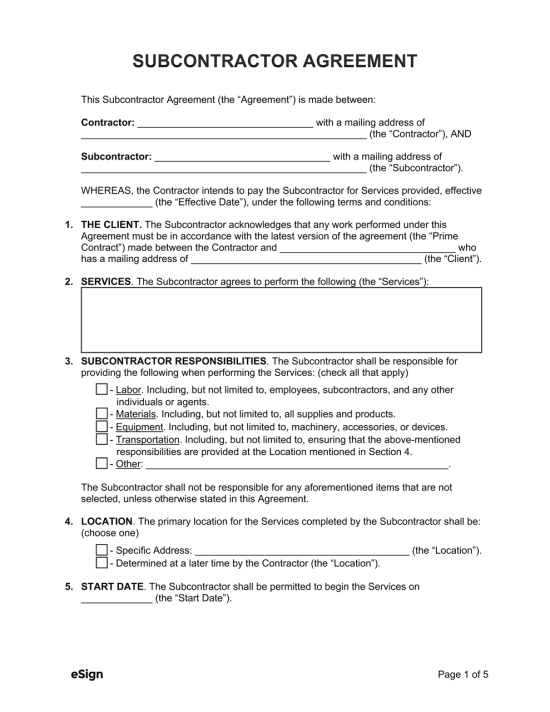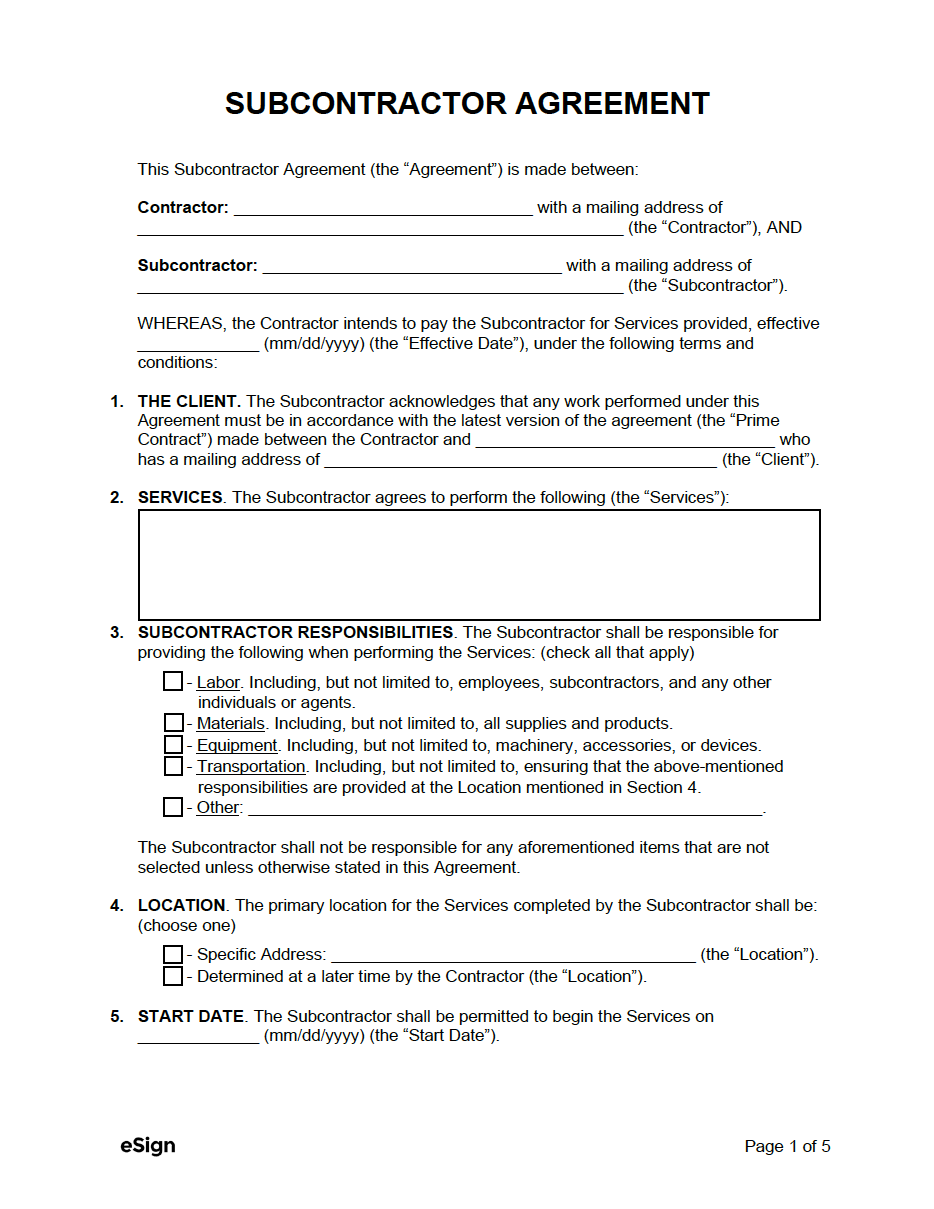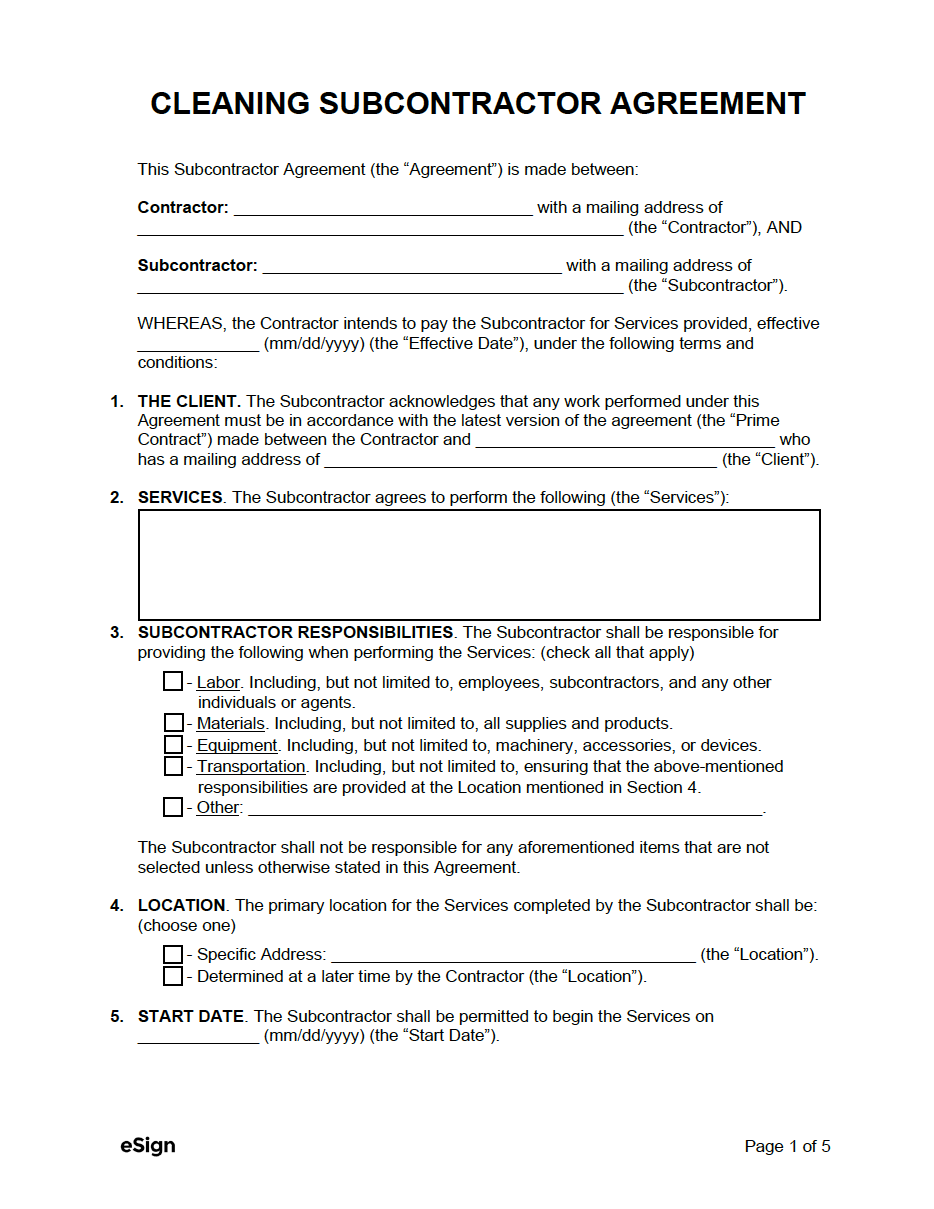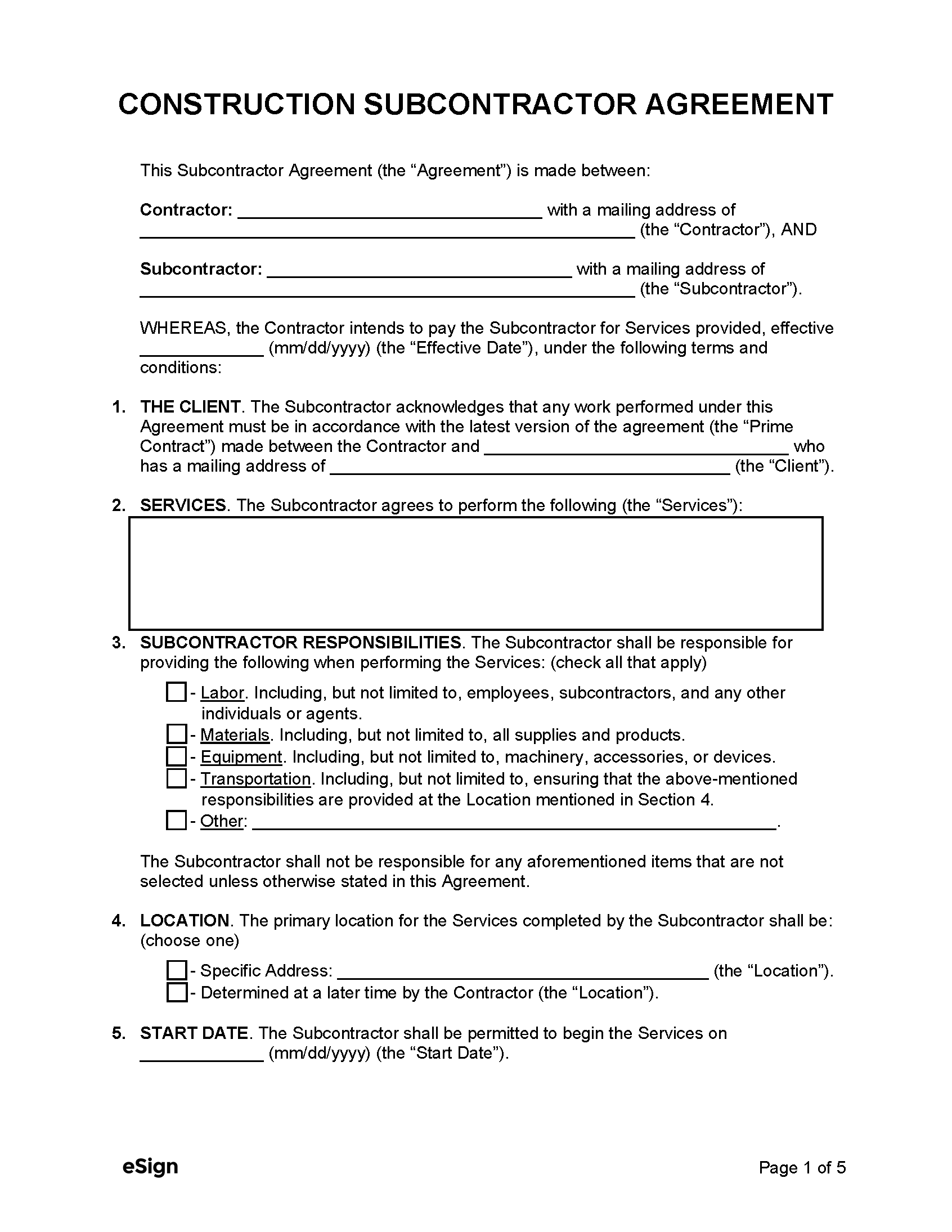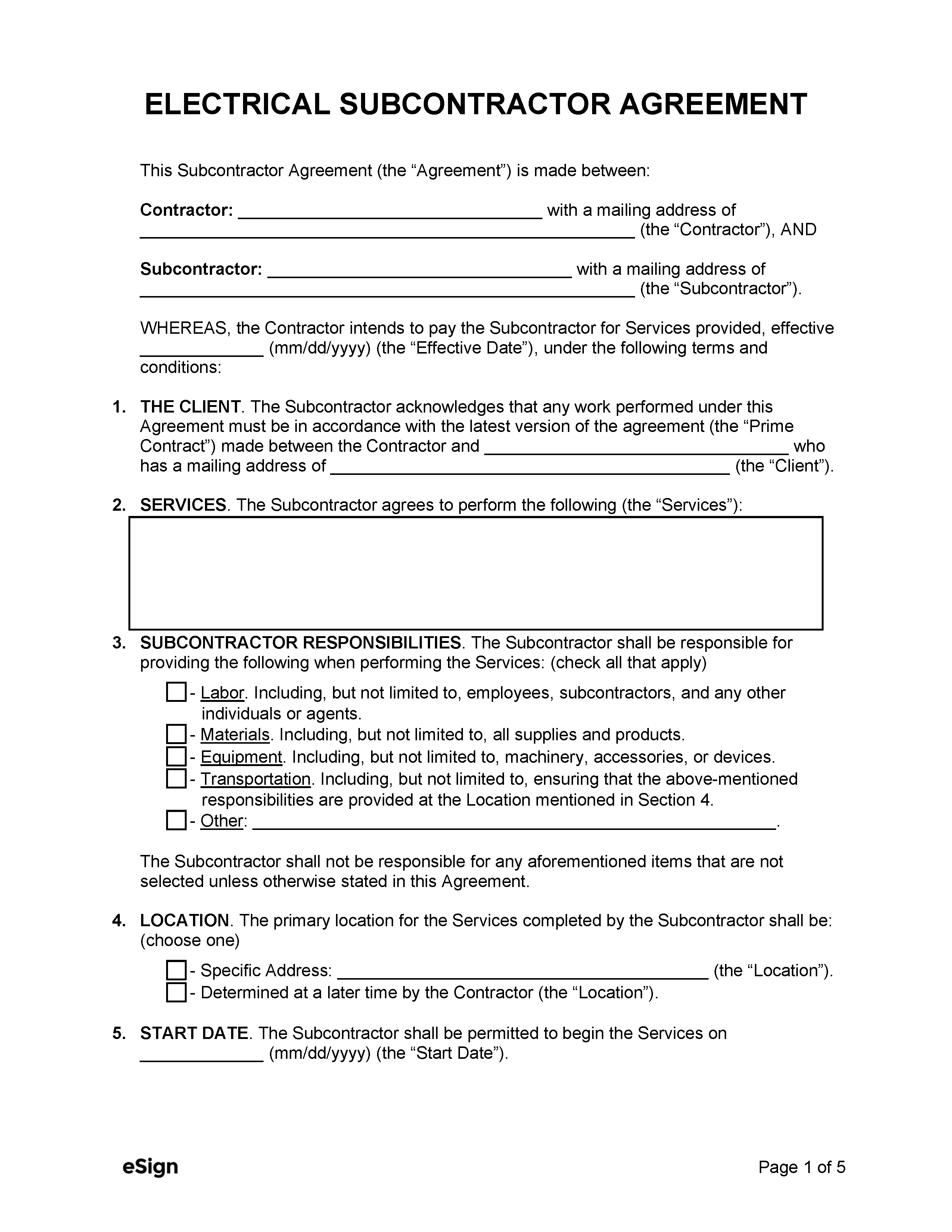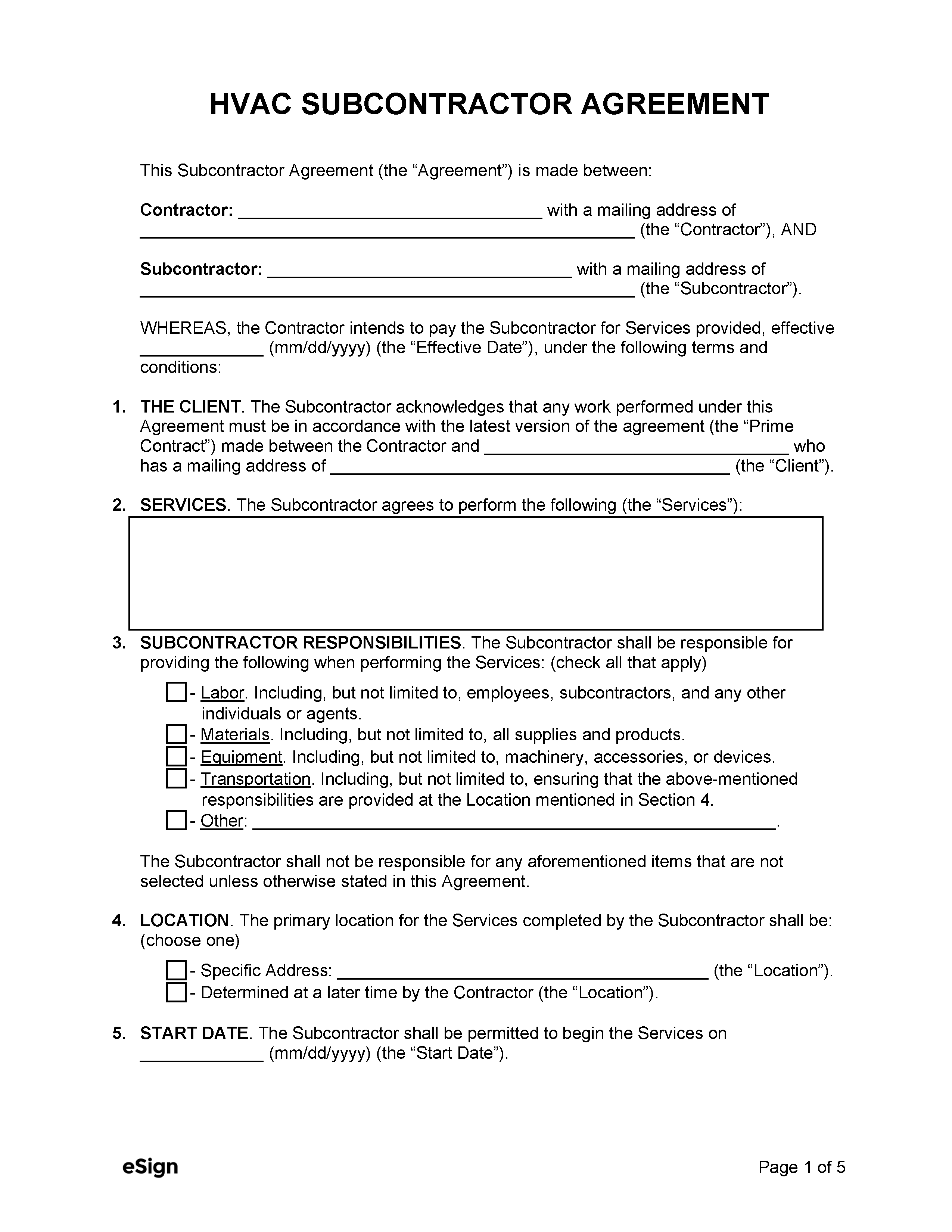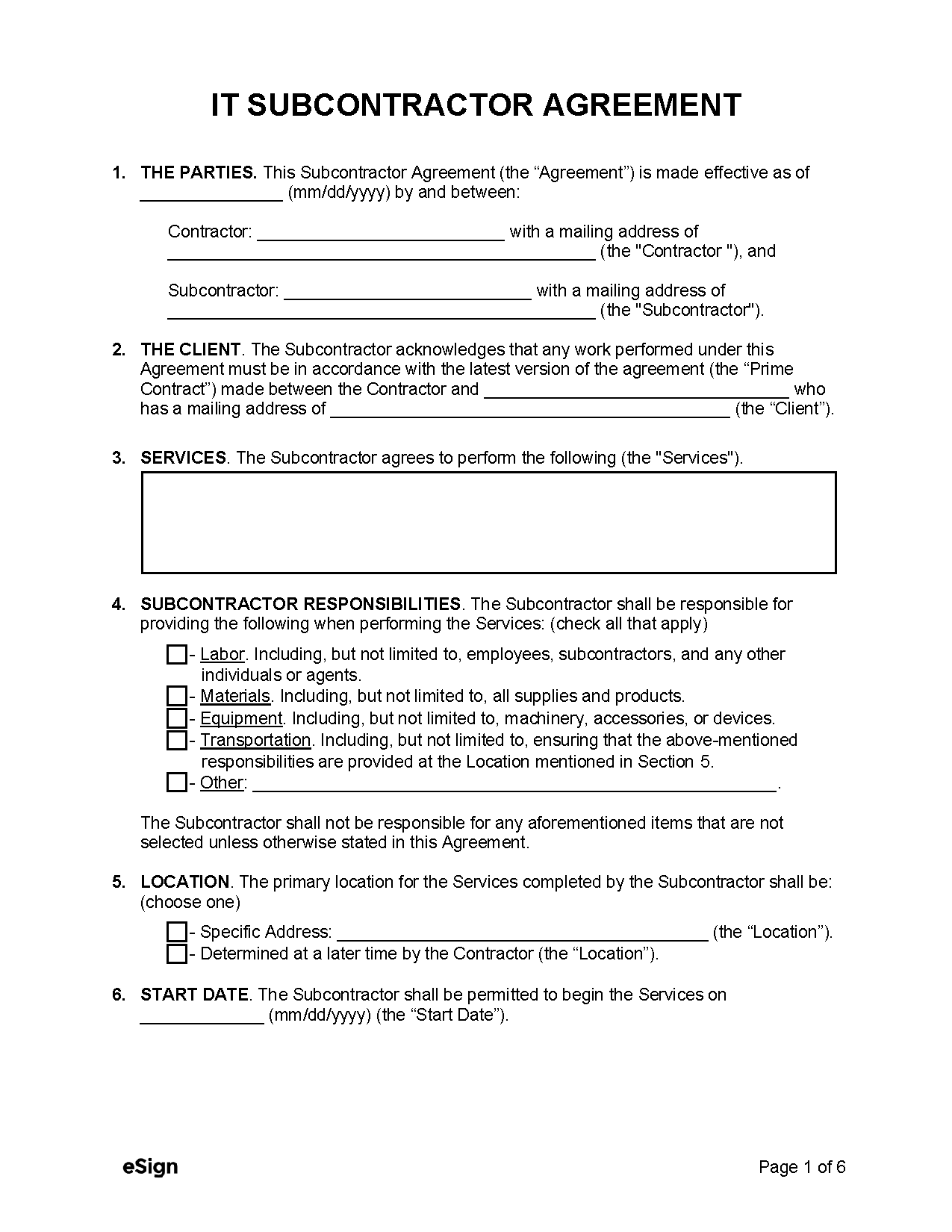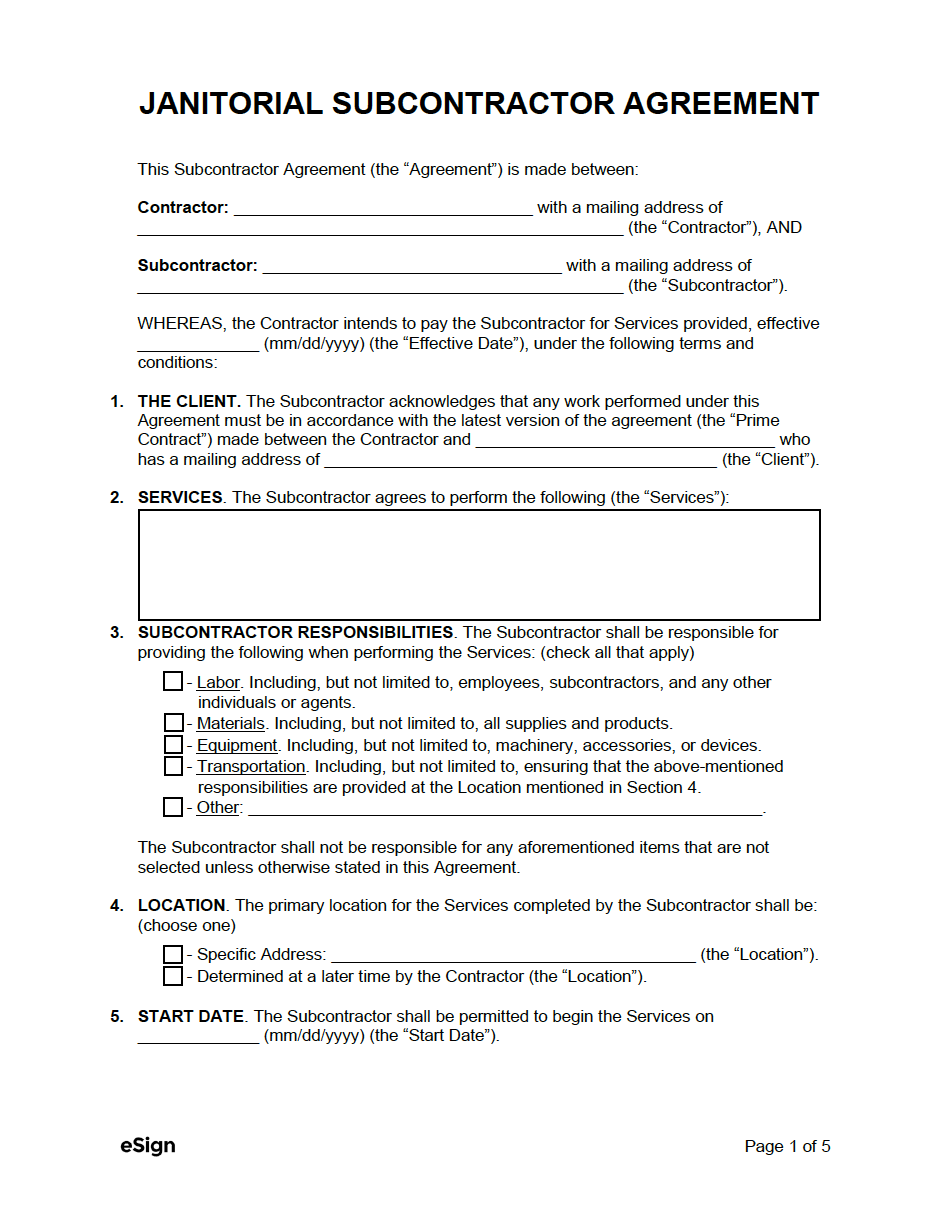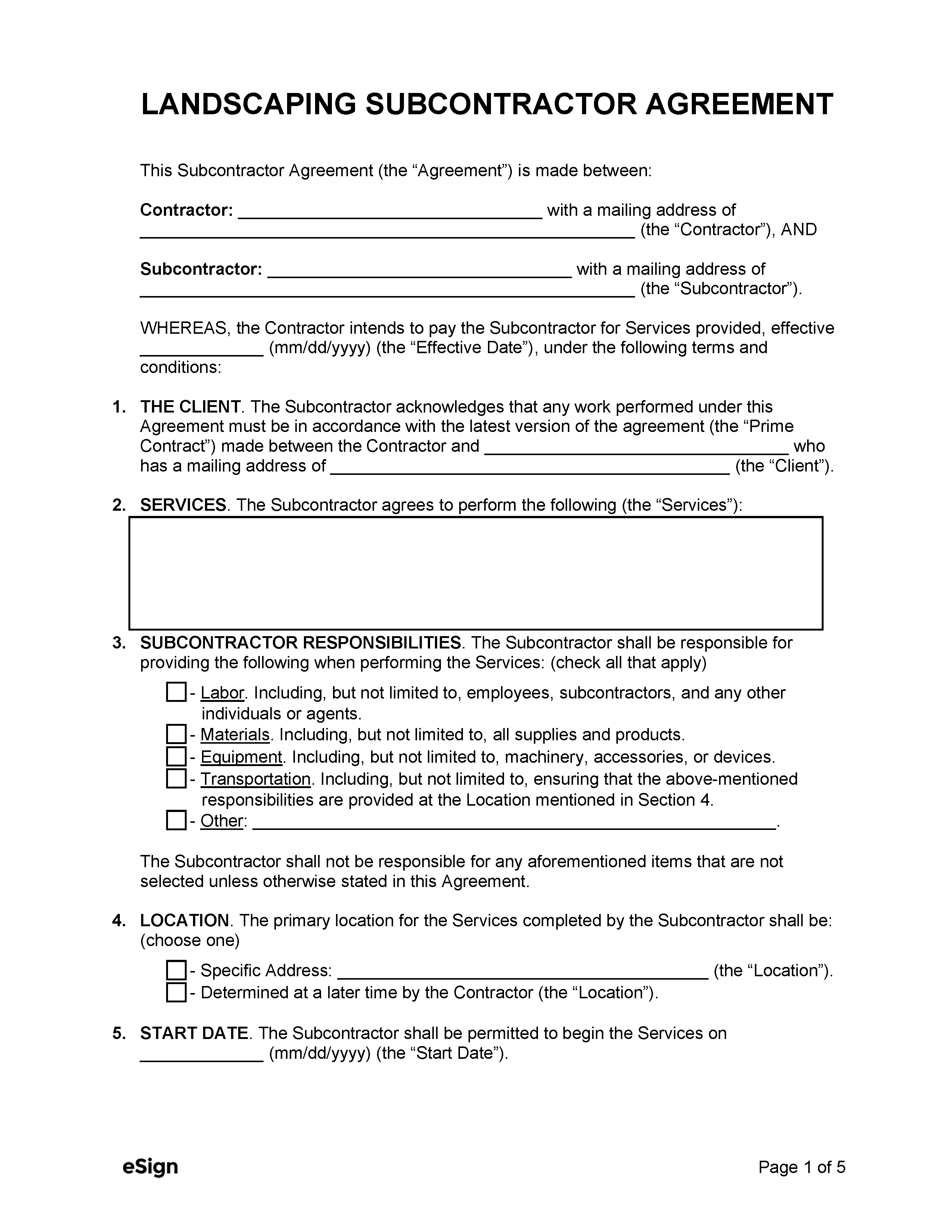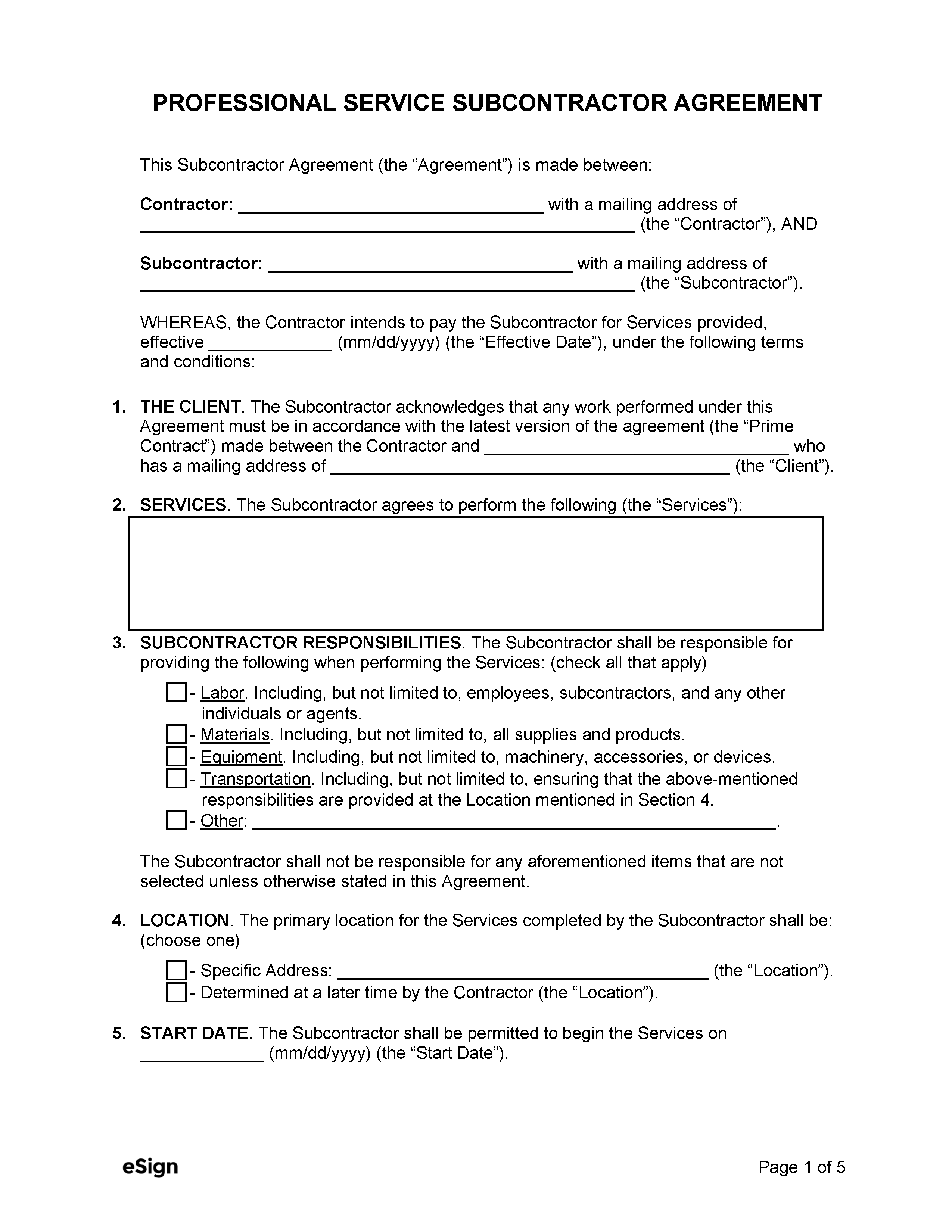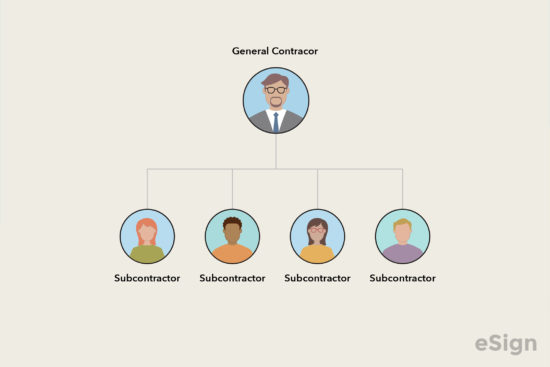By State
- Alabama
- Alaska
- Arizona
- Arkansas
- California
- Colorado
- Connecticut
- Delaware
- Florida
- Georgia
- Hawaii
- Idaho
- Illinois
- Indiana
- Iowa
- Kansas
- Kentucky
- Louisiana
- Maine
- Maryland
- Massachusetts
- Michigan
- Minnesota
- Mississippi
- Missouri
- Montana
- Nebraska
- Nevada
- New Hampshire
- New Jersey
- New Mexico
- New York
- North Carolina
- North Dakota
- Ohio
- Oklahoma
- Oregon
- Pennsylvania
- Rhode Island
- South Carolina
- South Dakota
- Tennessee
- Texas
- Utah
- Vermont
- Virginia
- Washington
- West Virginia
- Wisconsin
- Wyoming
By Type (8)
Subcontractor vs. Contractor
The major difference between a contractor and a subcontractor is who they’ve signed an agreement with. The contractor holds a master contract with the principal client, while the subcontractor is hired through a separate sub-agreement with the contractor.
Even though the client is at the top of the contractual hierarchy, the subcontractor’s obligations are to the contractor who hired them, not the client.
Taxation of Subcontractors
Tax-wise, contractors and subcontractors are both viewed as self-employed. This means they’re responsible for deducting expenses and paying their own taxes.
There are two important forms used by contractors:
- Form W9 – Prior to beginning work, the subcontractor must provide the contractor with a completed Form W9. This form is used for collecting information on the subcontractor only and is not filed with the IRS.
- Form 1099-NEC – Using information from the W9, the hiring contractor will need to complete Form 1099-NEC, which reports the amount of money paid to the subcontractor in a given year. A copy of the completed form will need to be sent to the subcontractor and filed with the IRS.
Subcontractor Agreement Content
The Parties
The contract usually includes the names and addresses of the contractor and subcontractor. Some agreements also include those of the client.
Services & Responsibilities
This section specifies the subcontractor’s duties and responsibilities. It should define whether the subcontractor will be responsible for managing other workers and whether they’ll need to provide materials, transportation, or their own tools.
Payment
The payment section explains how and when the contractor is paid for their work. This section is highly variable and depends on the deal that was worked out between the two parties. Some are paid hourly, whereas others are paid in standard weekly installments.
Start Date
The day, month, and year the subcontractor will begin work must be included.
Completion & Termination Clauses
The completion clause describes what must occur for the subcontractor to be finished with their services, such as a termination date or completion of work.
The termination clause refers to the terms by which either party can terminate the agreement early with written notice.
Dispute Resolution
This clause serves as a road map for reaching a resolution if a dispute arises between the parties.
- Binding arbitration – Both parties sit down with a third party to explain their perspectives and receive a binding decision from the arbitrator.
- Non-binding arbitration – Similar to binding arbitration, except the parties are not required to accept the arbitrator’s solution.
- Mediation – The parties speak with a a third-party mediator as well as each other to reach a fair resolution. If they don’t come to an agreement, litigation or binding arbitration will typically follow.
Change Orders
Mostly used in the construction industry, this section establishes the protocol to be followed if the client or contractor requires a change to the services provided by the subcontractor.
Signatures
The contractor and subcontractor must sign and date the contract for it to be binding on both parties.
